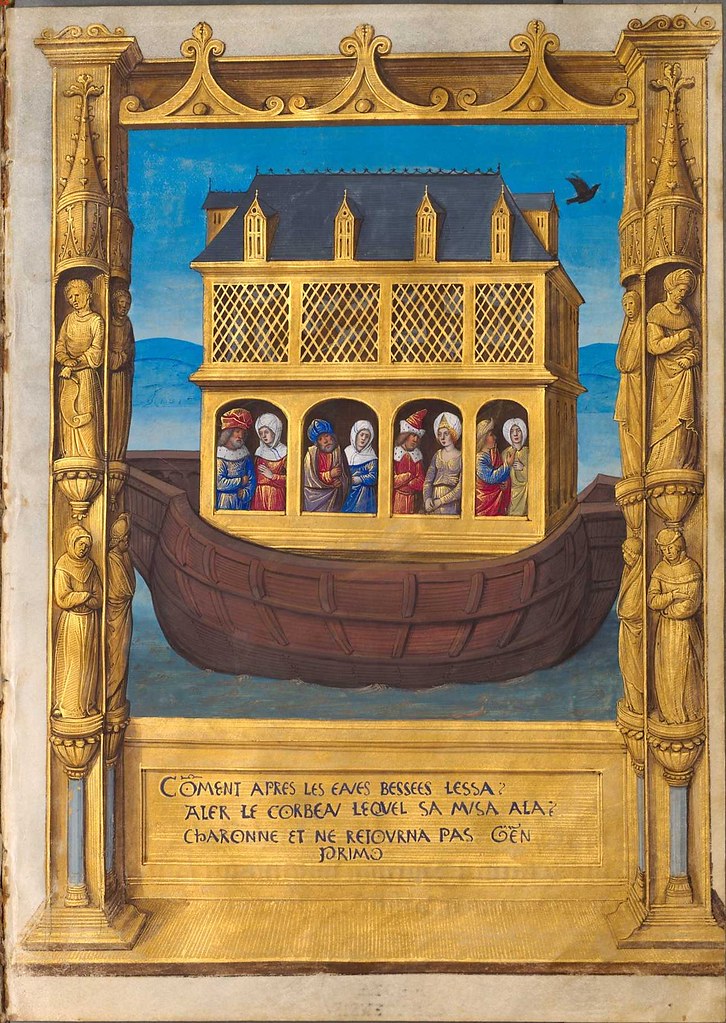
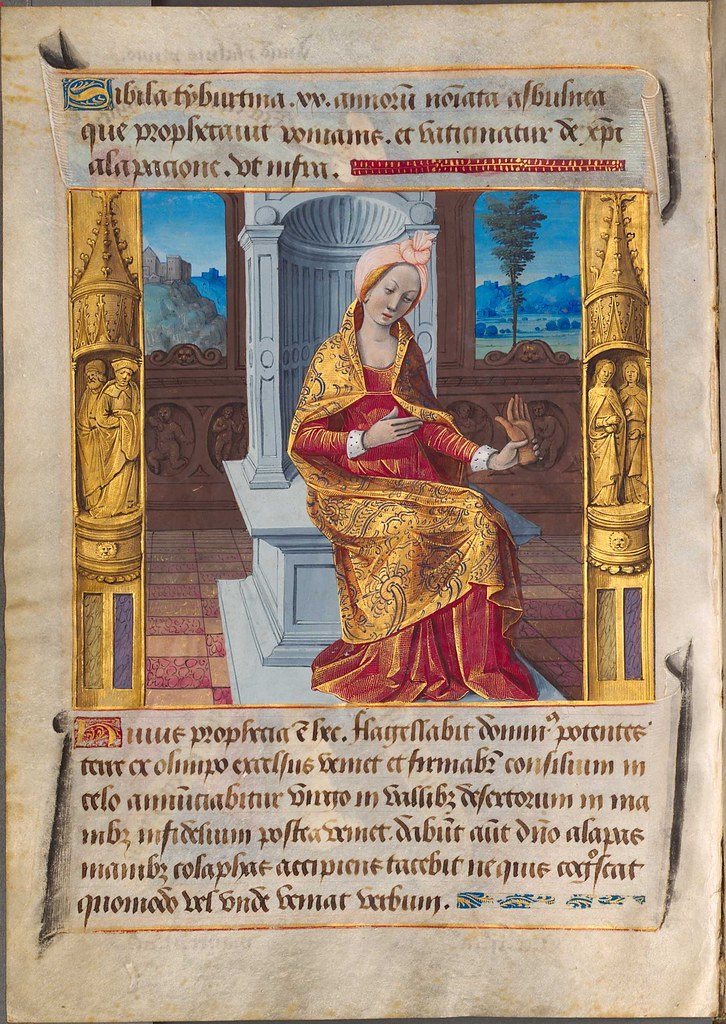
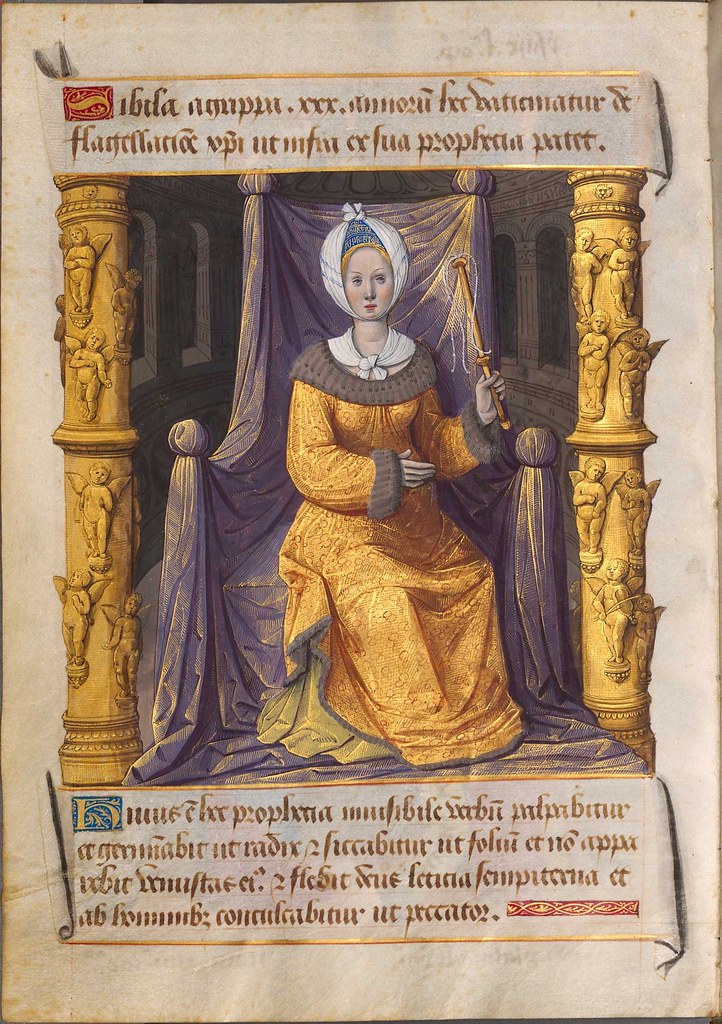
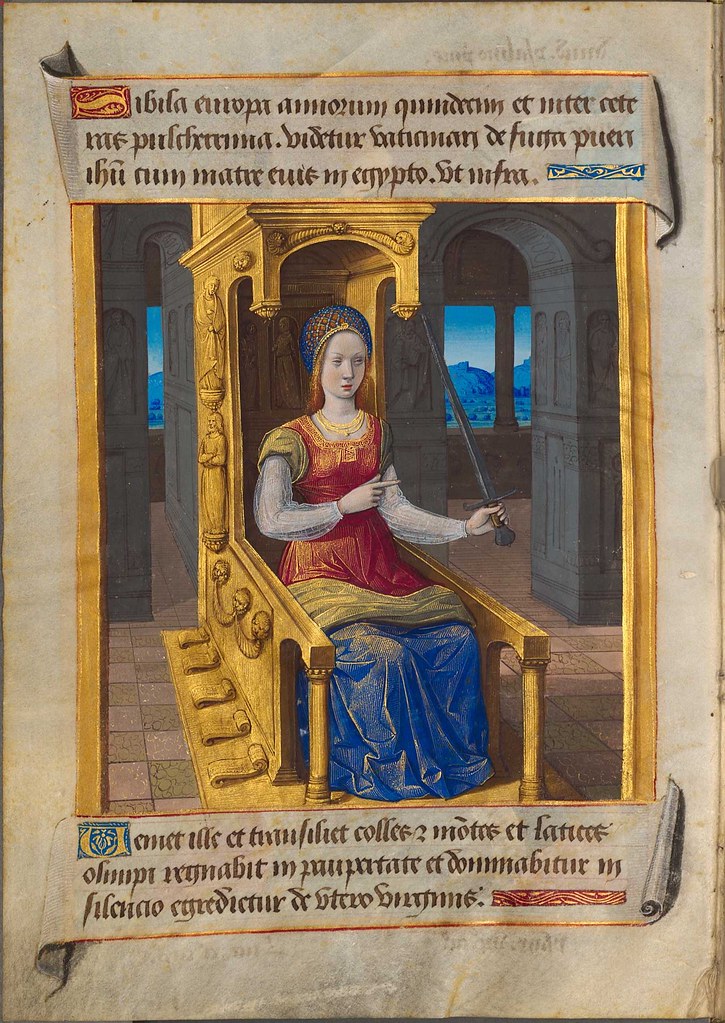
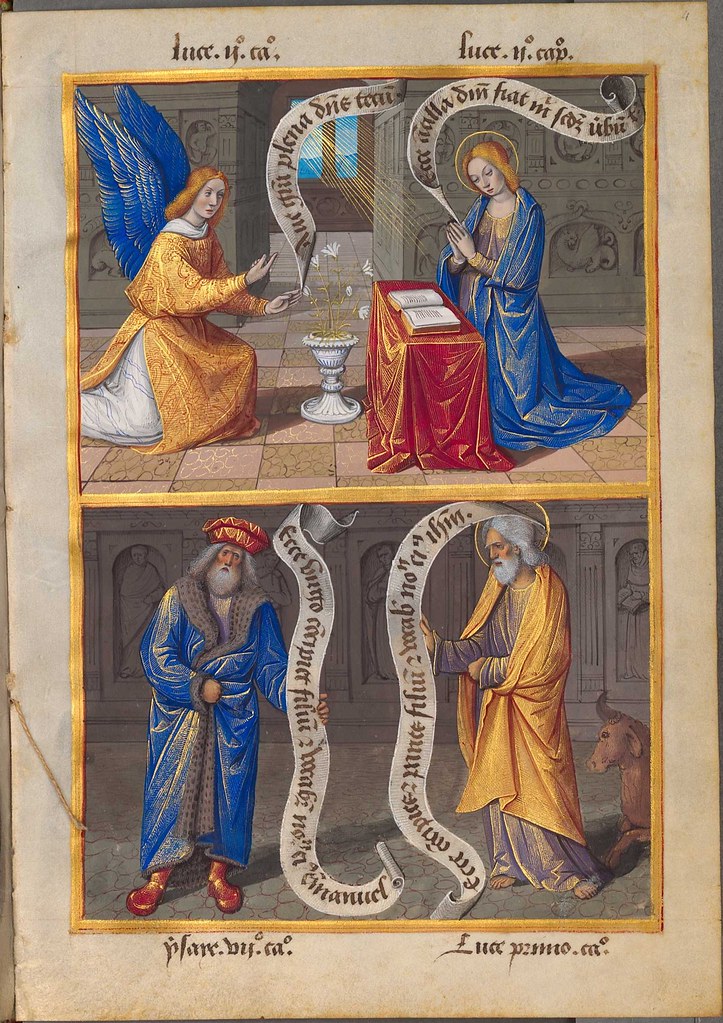
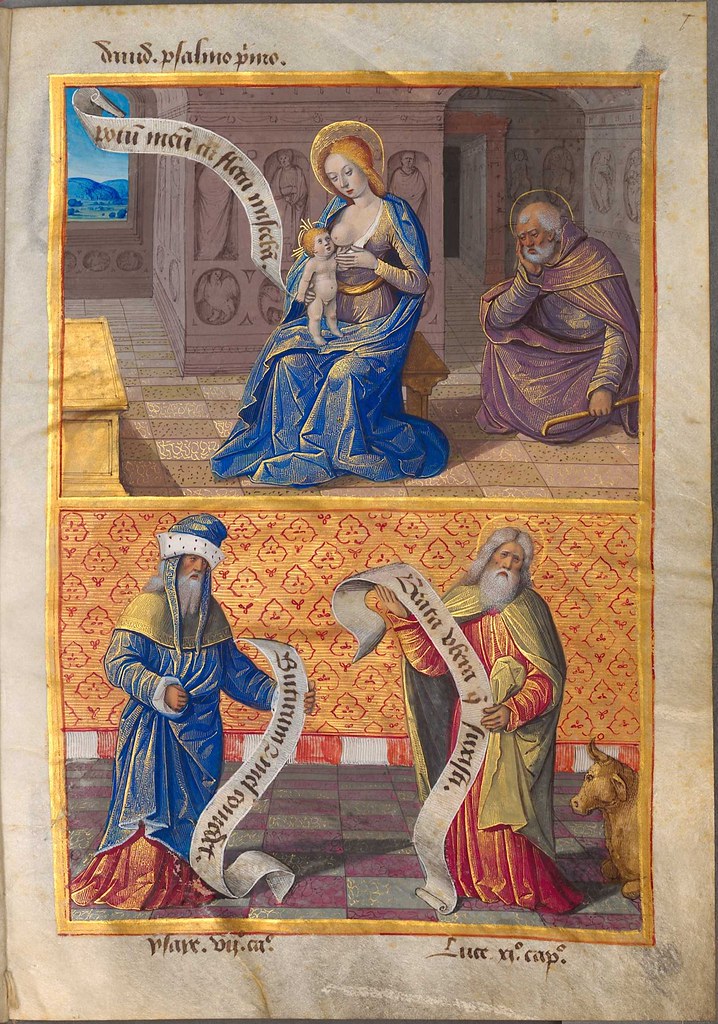
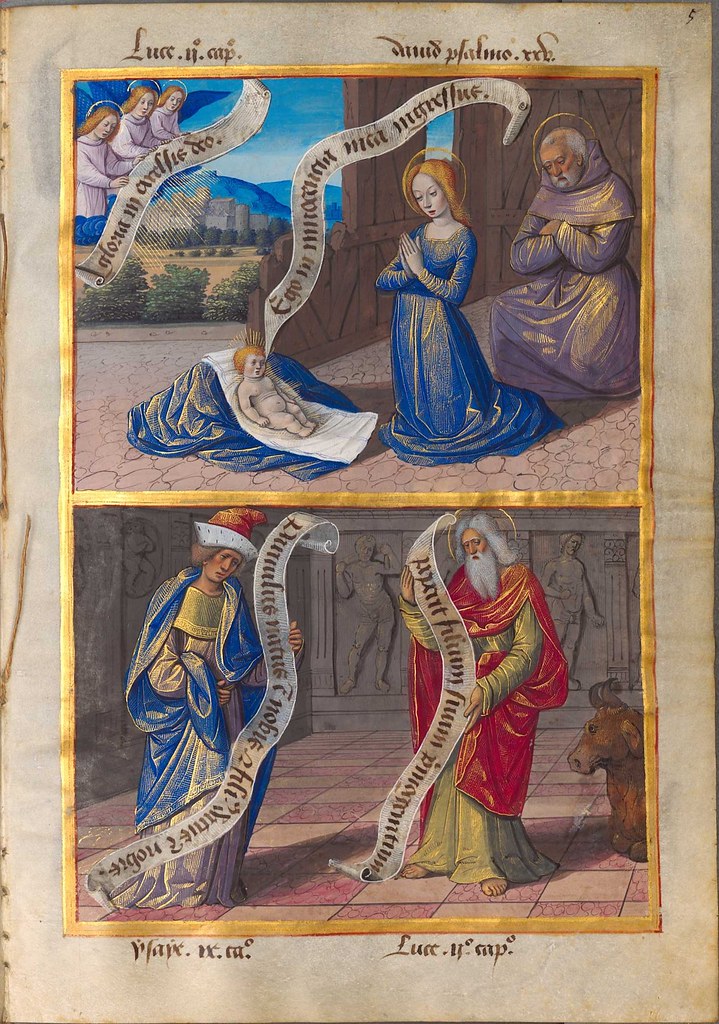
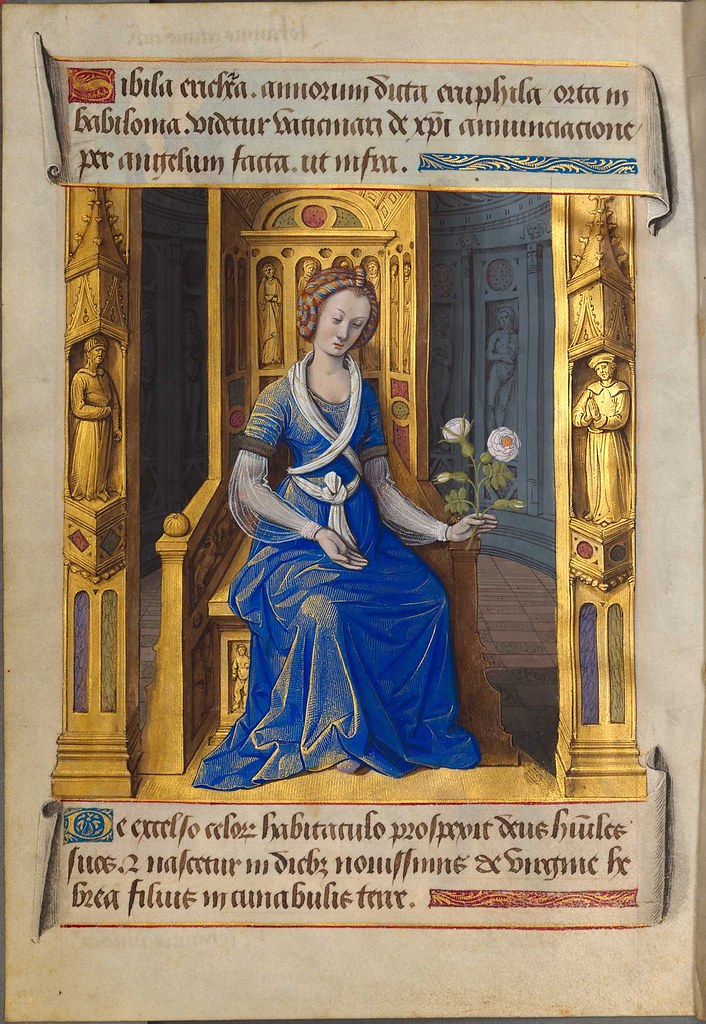

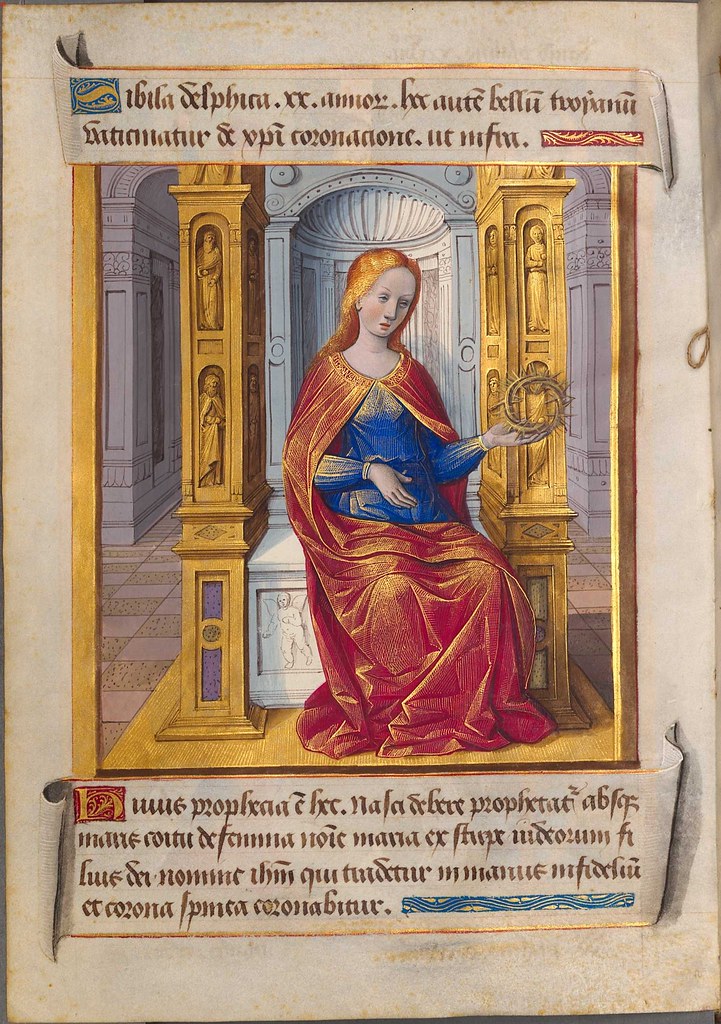
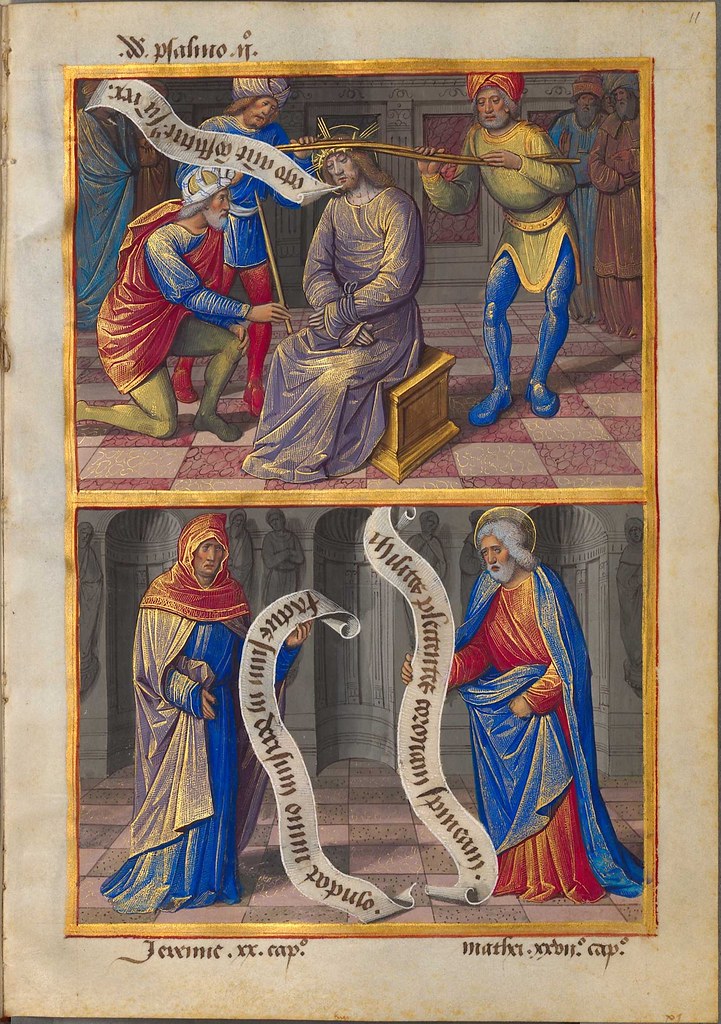
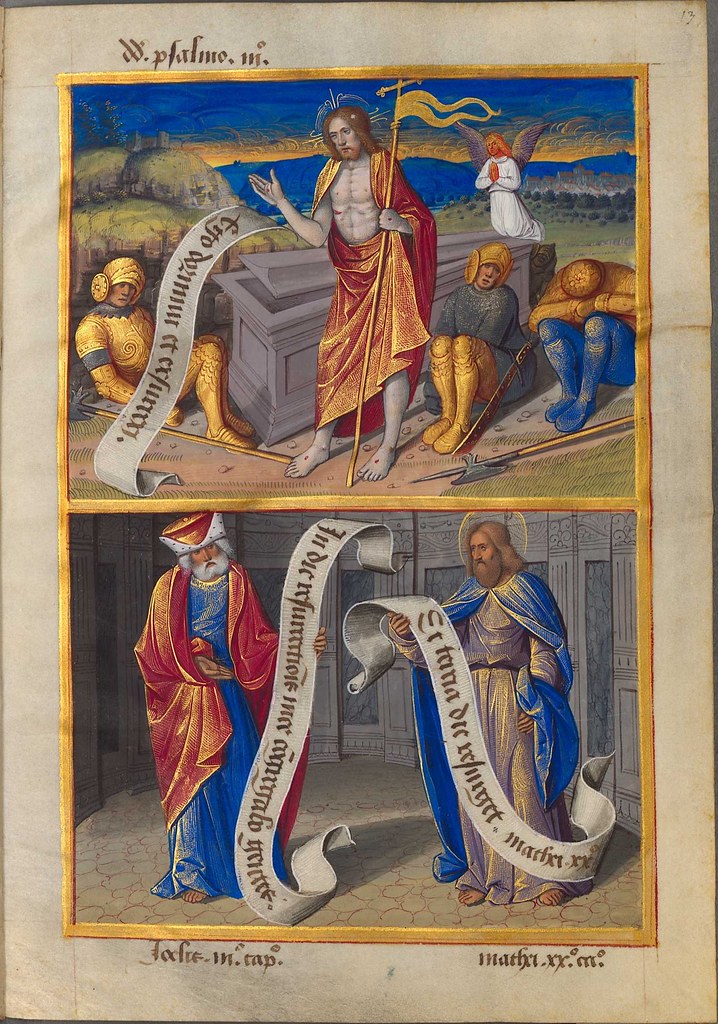
Arising from ancient legends, a Sibyl was a divinely inspired woman who revealed prophecies in poetic form, relating to Pagan, Jewish and Christian traditions.
The Sibyl are associated with the holy sites at which their predictions were made, such as Persian Sibyl, Cimmerian Sibyl, Delphic Sibyl, Tiburtine Sibyl etc. They first appear in the written record in about 500BC and their official numbers expanded over time, somewhat stabilising in the literature at ten by the 4th century AD and at about twelve during the Middle Ages.
As with Nostradamus, the Sibylline prophecies were open to interpretation and successive empires, religions and doctrines adapted the forecasts to serve their own ends. The sample images above come from a small manuscript that presents a miniature of each Sibyl with a snatch of Latin verse and the corresponding episode from the life of Christ that was said to have been predicted. The manuscript functions to cast the Sibyl as prophetic extra-biblical authorities from antiquity to bolster or promote the authenticity of Christian beliefs. Its appearance coincides with an increased prevalence of Sibyl in texts and artworks during the Renaissance.
The parchment manuscript, 'Sibylla Prophetae et de Cristo Salvatore vaticinantes', was produced in Tours in the 1490s. The current evidence suggests that Jean Poyer (or Poyet) was responsible for the elegant series of twenty five miniatures that feature generous shell gold illumination. In addition to the Sibyl framework, the manuscript draws iconographic inspiration from the Hours of Louis de Laval (1475) and devotional influence from the Medieval classic, 'Speculum Humanæ Salvationis'.
'Sibylla Prophetae et de Cristo Salvatore vaticinantes' [Cod.icon 414] is available from BSB München (note the 'Miniaturansicht' link up top for thumbnail images].
- Wikipedia (so-so): Sibyl; Sibylline Books; Sibylline oracles [& at New Advent].
- Background to the manuscript itself.
- Previously: Illuminated



























































9 comments :
Wonderful! I enjoy looking at the calligraphy!
Very beautiful...please more stuff like that!!!
i am new to your blog...I was searching for so long ..to find a place which has ancient art ......
Keep up the good work..
fascinating post! thank you!
The gold highlights on the garments are quite an interesting effect.
Does anyone else think there's always something slightly comical about the stiffness of the figures and the surreality of the scenes in Proto-Renaissance looking images?
Just gorgeous!
Really beautiful.
Very cool
Post a Comment
Comments are all moderated so don't waste your time spamming: they will never show up.
If you include ANY links that aren't pertinent to the blog post or discussion they will be deleted and a rash will break out in your underwear.
Also: please play the ball and not the person.
Note: only a member of this blog may post a comment.